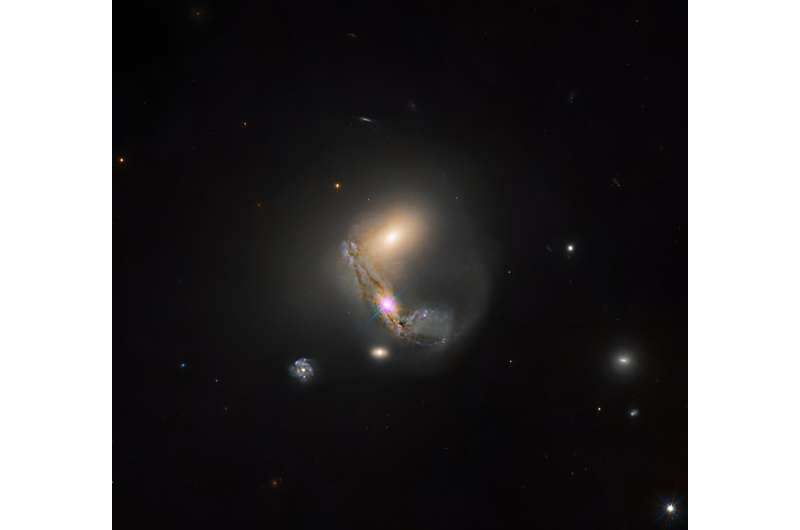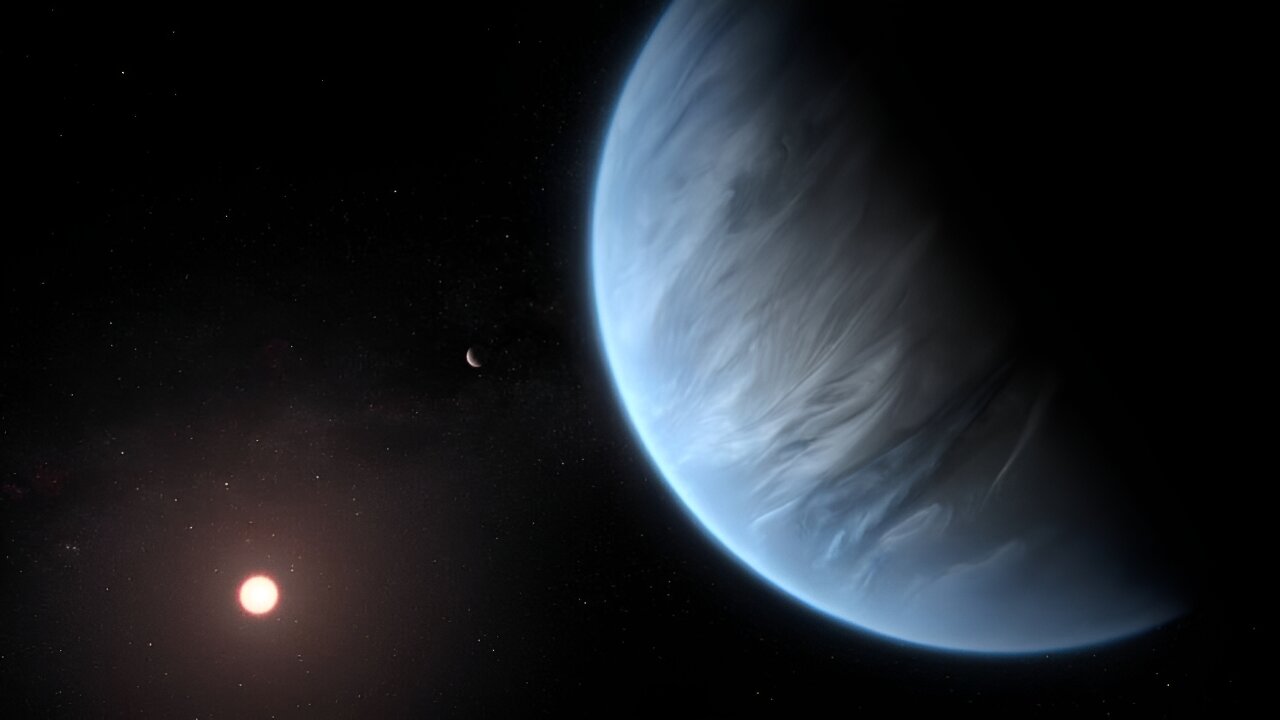[ad_1]

This new NASA Hubble Space Telescope image shows a group of interacting galaxies known as LEDA 60847.
LEDA 60847 is classified as an active galactic nuclei, or AGN. An AGN has a supermassive black hole in the galaxy’s central region that is accreting material. The AGN emits radiation across the entire electromagnetic spectrum and shines extremely brightly. By studying powerful AGNs that are relatively nearby, astronomers can better understand how supermassive black holes grow and affect galaxies.
Galaxy mergers are relatively common occurrences. Most larger galaxies are the result of smaller galaxies merging. The Milky Way itself contains traces of other galaxies, indicating it is the product of past mergers. Astronomers believe somewhere between 5% and 25% of all galaxies are currently merging.
This image of LEDA 60847 combines ultraviolet, visible, and near-infrared data from Hubble. The ability to see across all those wavelengths is one of the things that makes Hubble unique. Different types of light across the electromagnetic spectrum tell astronomers different things about our universe. Ultraviolet light traces the glow of stellar nurseries and is used to identify the hottest stars. Visible light shows us moderate-temperature stars and material, and also how the view would appear to our own eyes. Last but not least, near-infrared light can penetrate cold dust, allowing us to study warm gas and dust, and relatively cool stars.
Citation:
Image: Hubble glimpses bright galaxy group LEDA 60847 (2024, January 24)
retrieved 25 January 2024
from
This document is subject to copyright. Apart from any fair dealing for the purpose of private study or research, no
part may be reproduced without the written permission. The content is provided for information purposes only.
[ad_2]
Source link





No comments! Be the first commenter?